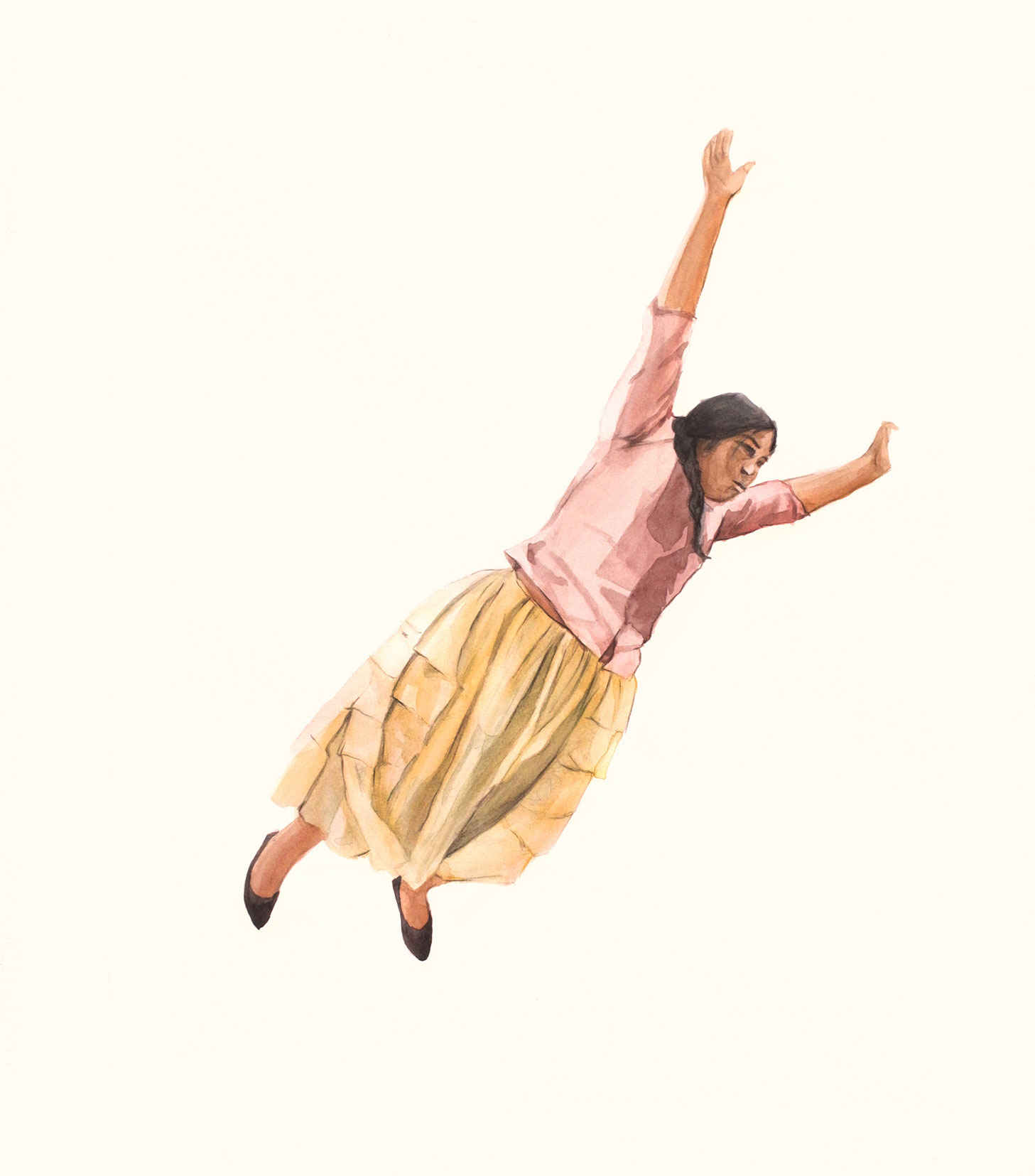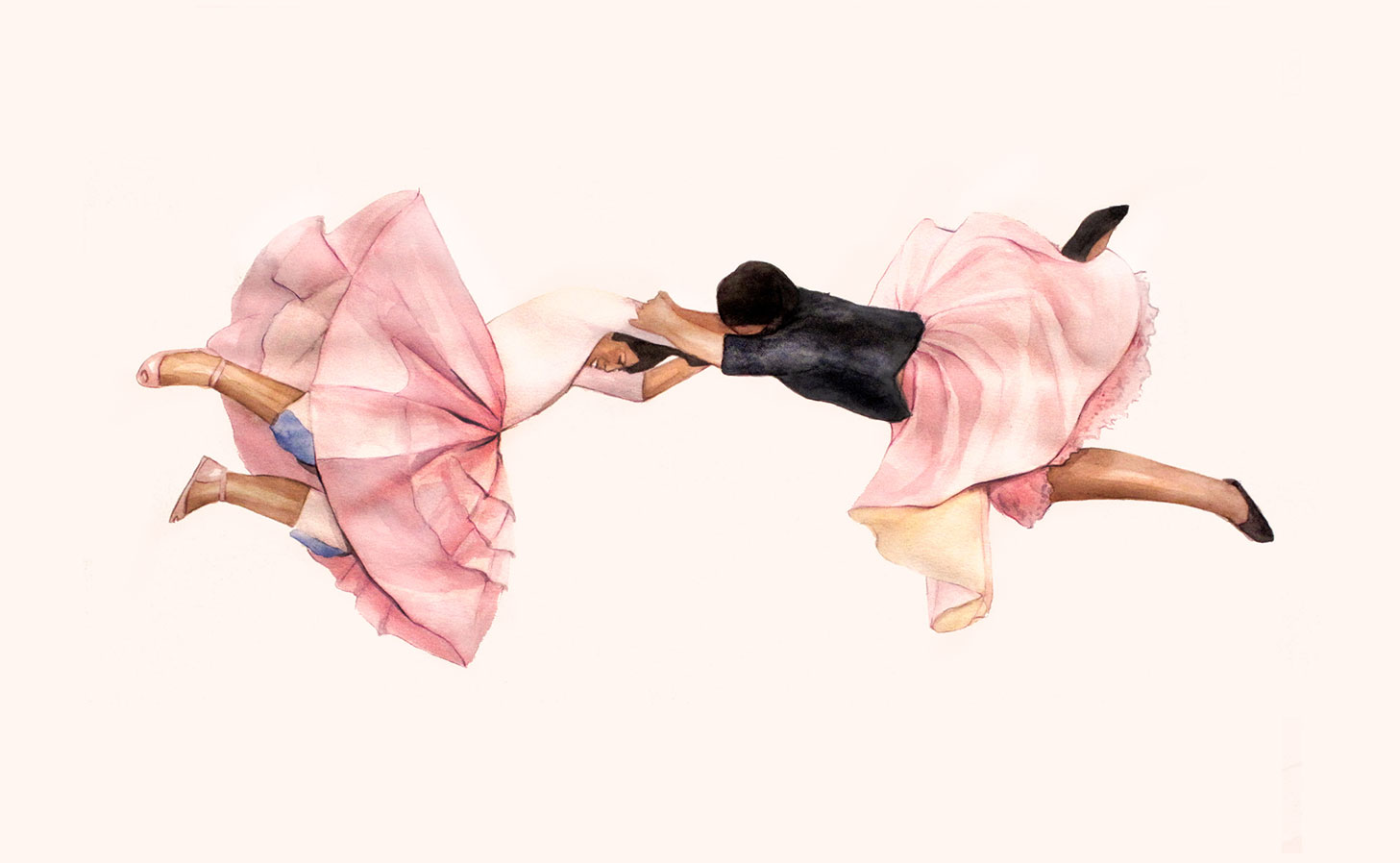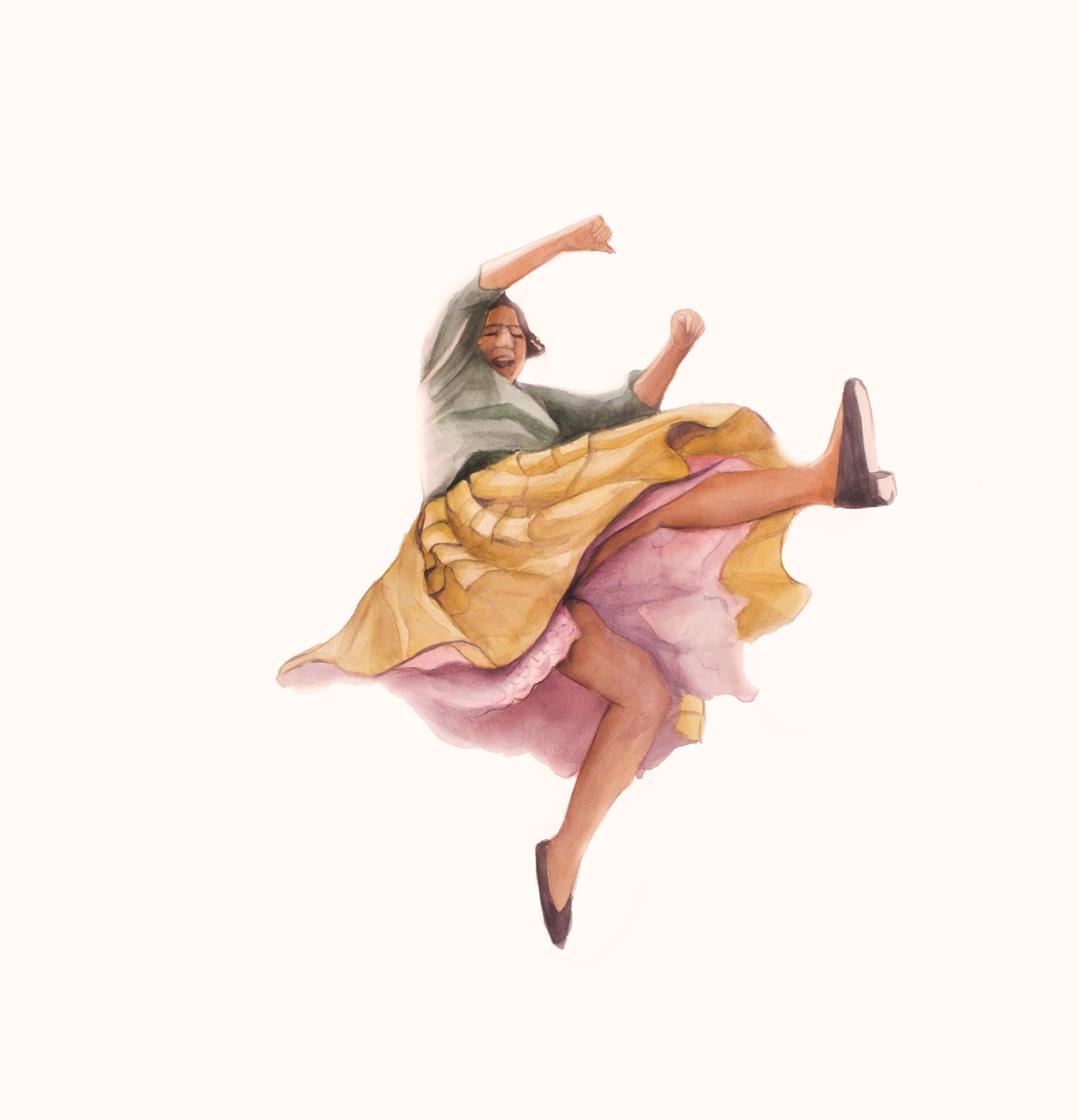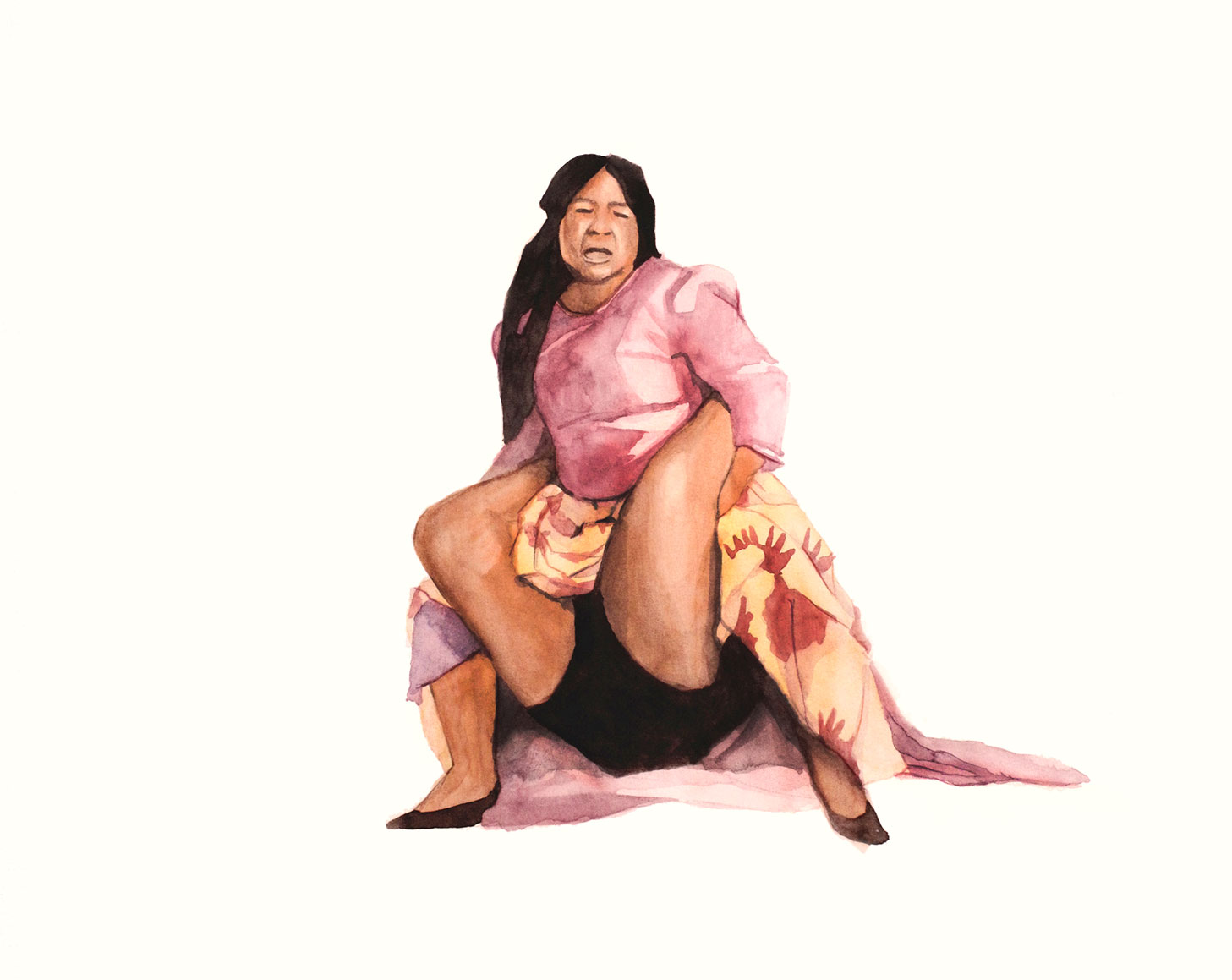MUJERES VOLADORAS
"Mujeres Voladoras" es un proyecto que explora la violencia desde la ambigüedad visual. A través de una serie de acuarelas, se representan escenas de lucha libre protagonizadas por Cholitas, mujeres bolivianas que practican este espectáculo de combate, cargado de teatralidad y dramatización.
Las imágenes muestran cuerpos en movimiento, suspendidos en el aire en pleno enfrentamiento. Sin contexto ni referencias espaciales, parecen flotar, atrapados en un instante eterno. ¿Están peleando? ¿Están volando? ¿Es un juego o una verdadera lucha? La imagen seduce con su belleza técnica, con la suavidad de la acuarela, con su aparente ligereza. Pero, poco a poco, la escena revela su dureza: la violencia está ahí, latente, en cada golpe, en cada caída.
El contraste entre la técnica y el contenido es clave en este proyecto. La acuarela, tradicionalmente asociada a la delicadeza y la tranquilidad, se convierte en el vehículo para representar la tensión, el impacto y la crudeza del enfrentamiento. Es precisamente esta contradicción la que hipnotiza al espectador y lo obliga a cuestionarse lo que ve.
La serie "Mujeres Voladoras" no ofrece respuestas, sino que abre un espacio de duda: ¿Estamos ante un combate real o ante una coreografía ensayada? ¿Es violencia o es espectáculo? ¿Es un juego o un ritual de agresión?
FLYING WOMEN
"Flying Women" is a project that explores violence through visual ambiguity. This watercolor series captures scenes of wrestling featuring Cholitas, Bolivian women who participate in this dramatic and theatrical combat spectacle.
The images depict bodies in motion, suspended in the air in the middle of a fight. Without context or spatial references, they seem to float, frozen in an eternal instant. Are they fighting? Are they flying? Is it a game or a real battle? The image seduces with its technical beauty, the softness of watercolor, and its apparent lightness. But little by little, the scene reveals its harshness: the violence is there, latent, in every blow, in every fall.
The contrast between technique and content is key to this project. Watercolor, traditionally associated with delicacy and tranquility, becomes the medium for representing tension, impact, and the rawness of confrontation. It is precisely this contradiction that mesmerizes the viewer and forces them to question what they see.
The "Flying Women" series does not provide answers but instead opens a space for doubt: Are we witnessing a real fight or a choreographed performance? Is this violence or spectacle? Is it a game or a ritual of aggression?
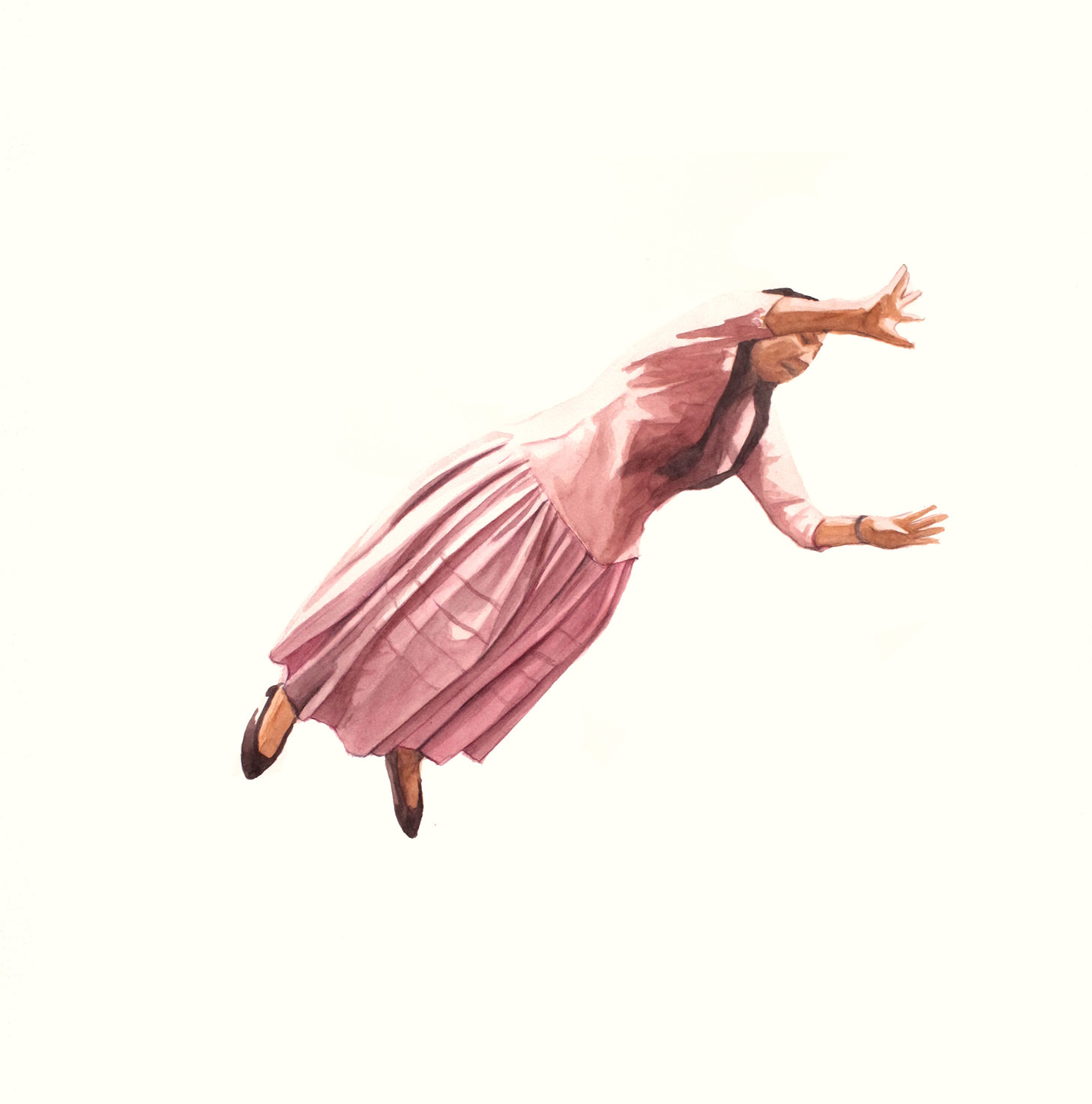
Todos los dibujos son
Acuarelas sobre papel
50 x 70 cm
2010
Acuarelas sobre papel
50 x 70 cm
2010

